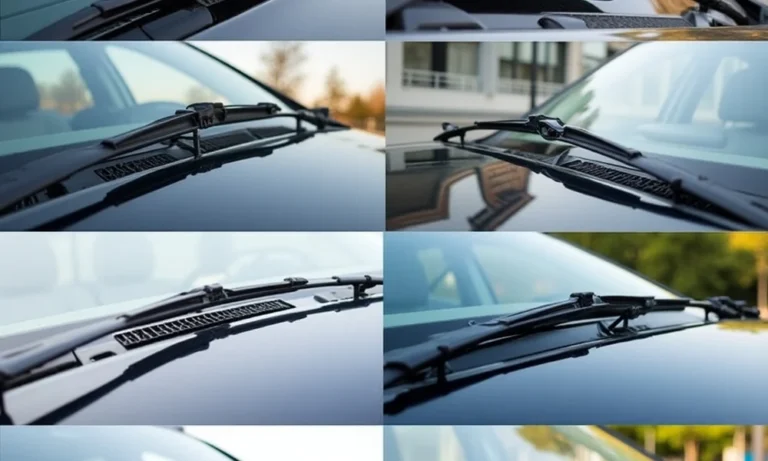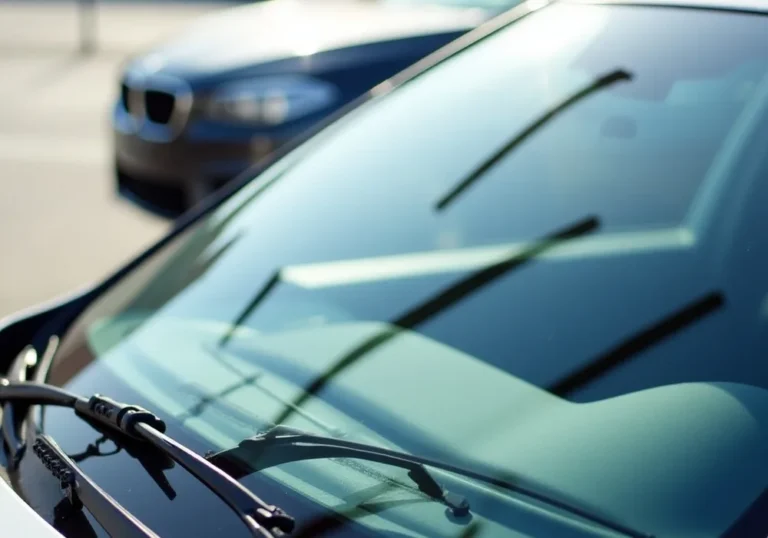What Kind Of Windshield Wipers Do I Need
What kind of windshield wipers do I need? It’s a question every driver should ask to ensure clear visibility and safe driving, especially in adverse weather conditions. Despite appearing to be a little part of your car, windscreen wipers are essential for preserving visibility in the event of rain, snow or dust storms. Choosing the right type of wiper blades isn’t just about fit—it’s about performance, durability, and safety.
When exploring your options, you’ll find a wide range of products, from affordable wiper blades for budget-conscious drivers to the best value wiper blades that balance cost and long-lasting performance. Understanding which type suits your driving needs and environment will help you make a smart, safe investment in your vehicle’s maintenance.
Traditional Frame-Style Wipers

Description:
These are the most widely used and traditional wiper blades; they have a rubber blade housed in a metal frame. The frame applies pressure through pivot points.
Pros:
- Usually the least expensive wiper blades available.
- Widely available and compatible with most older and economy vehicles.
- Easy to replace.
Cons:
- Susceptible to snow and ice buildup.
- Less uniform pressure on the windshield, which can lead to streaking.
- Shorter lifespan compared to other types.
Best Use Cases:
- Mild to moderate climates where snow and ice are not a major concern.
- Older vehicle models or budget-conscious drivers seeking affordable wiper blades.
2. Beam-Style Wipers
Description:
These are made from a single piece of rubber or silicone, without an external frame. They provide consistent pressure across the entire blade length.
Pros:
- Excellent performance in extreme weather (snow, ice, heavy rain).
- Sleek, modern design reduces wind lift at high speeds.
- Longer lifespan and better wiping performance.
Cons:
- Generally more expensive – considered premium wiper blades.
- Not all car types may be able to use it without adapters.
Best Use Cases:
- Harsh weather conditions, including icy winters and rainy climates.
- Modern vehicles that require high-performance premium wiper blades.
- Ideal for drivers prioritizing durability and visibility.
3. Hybrid Wipers
Description:
Hybrid wipers combine the aerodynamic and streamlined design of beam-style blades with the structural integrity of conventional frame wipers. They often have a protective shell over the frame.
Pros:
- Blend of durability, weather resistance, and wiping performance.
- More uniform pressure distribution than traditional blades.
- Suitable for a wide range of vehicles.
Cons:
- Slightly more expensive than traditional blades, but generally less than premium beam wipers.
- Heavier than beam wipers, which may affect performance slightly.
Best Use Cases:
- Variable climates – perform well in both rain and light snow.
- Mid-range vehicles where a balance of performance and cost is needed.
- Great for drivers wanting a step up from affordable wiper blades without fully investing in premium wiper blades.
You can read about Is Windshield Wiper Fluid Flammable.
How to Choose the Right Size Windshield Wipers
1. Understanding Wiper Blade Sizing and Fitment
Windshield wipers are not one-size-fits-all. Each vehicle typically uses two different sizes—one for the driver’s side and one for the passenger’s side. Some vehicles also have a rear wiper. The correct size ensures proper coverage and effective performance.
- A blade that is too short may leave large areas of the windshield unwiped.
- A blade that is too long may overlap or miss proper contact, causing streaks or damage.
Choosing the correct size is key to getting the best value wiper blades that offer both longevity and performance.
2. How to Find the Correct Size
Check Your Owner’s Manual
The most reliable place to find the correct wiper sizes for your vehicle. It will list the required lengths for both front and rear wipers.
Visit the Vehicle Manufacturer’s Website
Most car manufacturers have online resources where you can search for recommended wiper sizes using your vehicle’s make, model, and year.
Use Online Lookup Tools
Many auto parts retailers and websites offer easy-to-use wiper size lookup tools. Just enter your vehicle details to get the exact size:
- AutoZone
- Advance Auto Parts
- Rain-X or Bosch websites
- Amazon’s “Garage” feature
These tools often categorize options by best value wiper blades and affordable wiper blades, helping you compare price and performance.
Ask at Auto Parts Stores
In-store look-up guides or assistance from staff can quickly help you find the right size. Most stores also allow you to test fit the wiper blades before purchase.
3. Common Mistakes to Avoid
- Guessing the size: Even a 1-inch difference can cause poor wiping or damage.
- Assuming both blades are the same size: In most vehicles, they’re different lengths.
- Ignoring rear wiper size: If your car has a rear wiper, be sure to check its size separately.
- Focusing only on price: Cheaper doesn’t always mean better. Look for affordable wiper blades that still offer decent durability and warranty to ensure value.
4. Choosing the Best Value Wiper Blades
When balancing performance and price:
- Affordable wiper blades are ideal for mild climates and low-mileage driving. Look for well-reviewed budget brands.
- Best value wiper blades may cost a little more but offer longer life, better materials, and often come with warranties—ideal for moderate climates or frequent driving.
Final Tip: Replace Both Blades Together
Even if only one blade is worn, replacing both ensures even wiping and reduces wear on your windshield. Many retailers offer discounts when buying pairs, giving you more best value wiper blades options.
You should know about How To Replace Windshield Wiper Motor.
Factors to Consider When Choosing Windshield Wipers

Climate and Weather Conditions
One of the most crucial considerations for selecting the appropriate wiper blades is the weather:
Dry or Mild Climates
- Standard rubber blades are often sufficient.
- When replaced on a regular basis (every 6 to 12 months), inexpensive wiper blades can function well under these settings.
Rainy Climates
- Better contact and water removal are provided by hybrid or beam-style wipers.
- Look for water-repellent coatings for added visibility.
Cold, Snowy, or Icy Climates
- Choose winter-specific wipers or beam-style blades with an enclosed design to prevent ice buildup.
- Silicone blades remain flexible in freezing temperatures and offer better durability—ideal for best value wiper blades in harsh winters.
Driving Habits and Environment
Your typical driving conditions influence which blades will work best.
Urban / City Driving
- Frequent starts and stops may wear blades faster.
- Affordable options may suffice if you don’t drive long distances or in extreme weather.
Highway Driving
- Higher speeds increase wind lift. Beam blades with aerodynamic designs help maintain performance at speed.
- Consider premium or best value wiper blades for longer lifespan and consistent performance.
Rural or Off-Road Areas
- Exposure to dust, mud, and debris requires tougher blades with strong wiping power.
- Hybrid or beam blades are ideal for durability and resistance to clogging.
Budget and Brand Considerations
It’s essential to strike a balance between performance and cost:
- Affordable wiper blades are great for short-term needs or older vehicles.
- Best value wiper blades provide long-lasting performance at a mid-range price—perfect for everyday drivers who want reliability without overspending.
- Trusted brands like Bosch, Rain-X, Michelin, and Trico offer a range of both budget-friendly and premium options.
Tip: Look for multi-packs or seasonal promotions at auto parts stores for better deals.
Blade Material: Rubber vs. Silicone
Rubber Blades
- Most common and cost-effective.
- Work well in moderate climates.
- Need to be replaced more frequently (every 6–12 months).
- Often used in affordable wiper blades.
Silicone Blades
- More durable and flexible in extreme temperatures.
- Offer water-repellent properties after a few uses.
- Last up to 2x longer than rubber blades.
- Found in many best value wiper blades and premium lines.
How Often Should You Replace Windshield Wipers?
A good rule of thumb for how often you should replace windshield wipers is every 6 to 12 months. Wiper blades wear out over time due to sun, rain, dirt, and temperature changes—reducing visibility and safety.
Key Signs It’s Time to Replace:
- Streaking or smearing on the windshield
- Squeaking or chattering sounds while wiping
- Skipping or inconsistent contact with the glass
- Visible cracks, splits, or worn rubber
Even the best value wiper blades lose effectiveness with use, so routine checks are important.
Seasonal Replacement Tips:
- Before winter: Cold weather and ice can cause rubber to harden or crack.
- Before summer: Heat and UV rays break down the rubber, leading to streaks.
If you live in an area with extreme seasons, you might need to replace your wipers twice a year. Many drivers opt for affordable wiper blades more frequently or invest in premium options for longer-lasting performance.
When to Seek Professional Assistance
While replacing windshield wipers is often a simple DIY task, there are times you should get professional assistance selecting windshield wipers—especially if you’re unsure about the right size or fit. If your vehicle has high-end or specialty wiper systems, or you experience issues with installation, visiting a mechanic or an auto parts store is a smart choice. Many retailers offer free installation help and expert advice to ensure you get the right blades. For reliable service and expert guidance, trust Texas Reliable Auto Glass. Need help choosing or installing your wipers? Contact us today for professional support and quality service!
FAQs
Q: How Do I Figure Out What Kind Of Windshield Wipers Do I Need For My Car?
A: To determine what kind of windshield wipers you need, check your vehicle’s owner manual or use an online lookup tool with your car’s make, model, and year. This ensures you get the correct size and style for proper fit and performance.
Q: Are There Different Types Of Windshield Wipers I Should Consider When Choosing What Kind I Need?
A: Yes, the main types include traditional frame-style, beam-style, and hybrid wipers. Your choice depends on your climate, driving habits, and whether you want affordable or premium wiper blades.
Q: Can I Choose Any Type If I’m Not Sure What Kind Of Windshield Wipers Do I Need?
A: It’s best to avoid guessing. Using the wrong size or style can reduce visibility and cause streaking. Always verify fitment before buying to ensure safety and optimal performance.
Q: Do I Need Special Windshield Wipers If I Live In A Snowy Or Rainy Area?
A: Yes, if you often face heavy rain, snow, or ice, beam-style or silicone blades are better suited for those conditions. They offer better durability and performance compared to standard rubber blades.
Q: Where Can I Get Help If I Don’t Know What Kind Of Windshield Wipers Do I Need?
A: Auto parts stores and professional shops can assist you in selecting the right blades. Brands like Texas Reliable Auto Glass also offer expert advice and installation to make sure you get the best fit.

